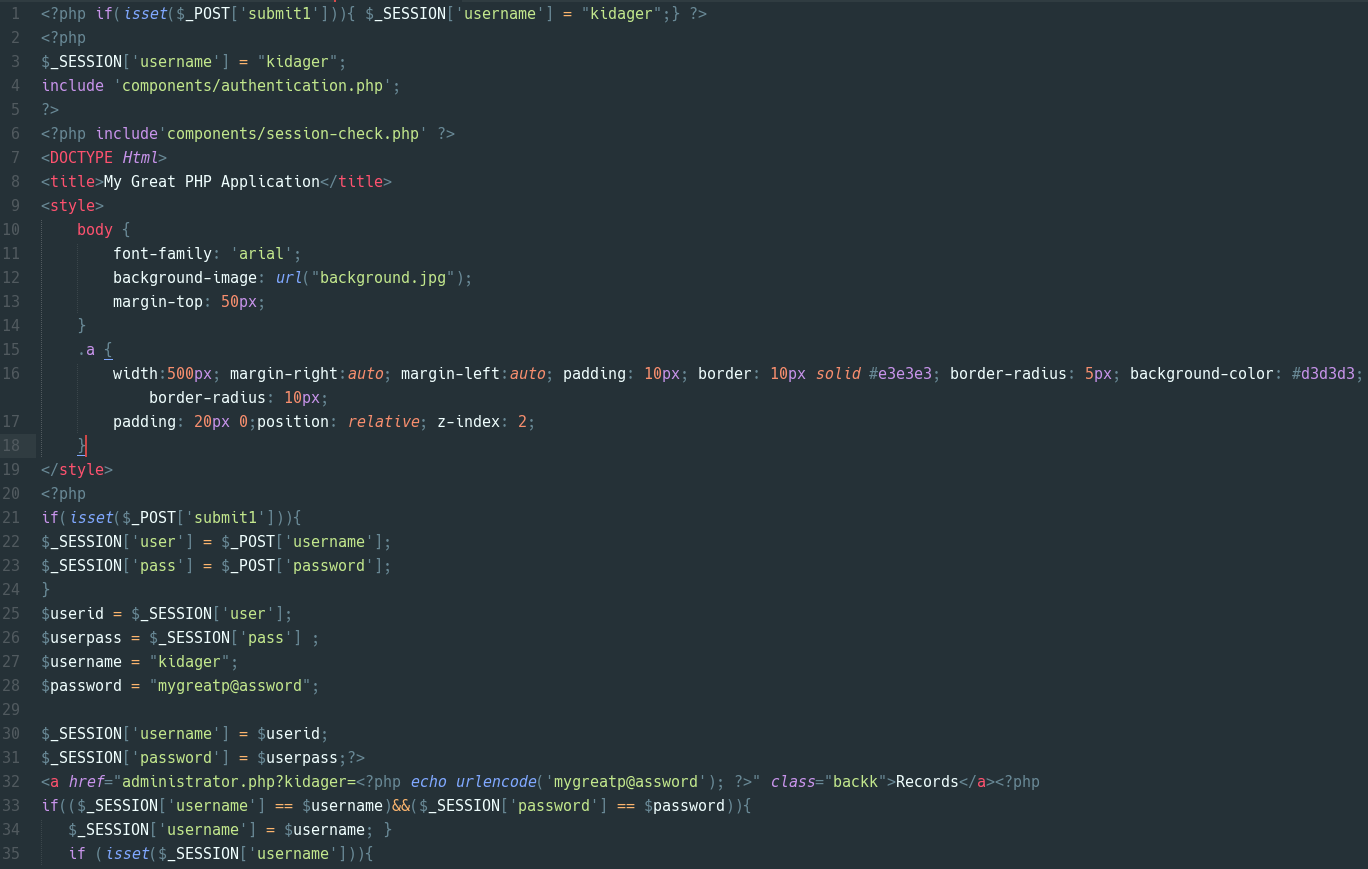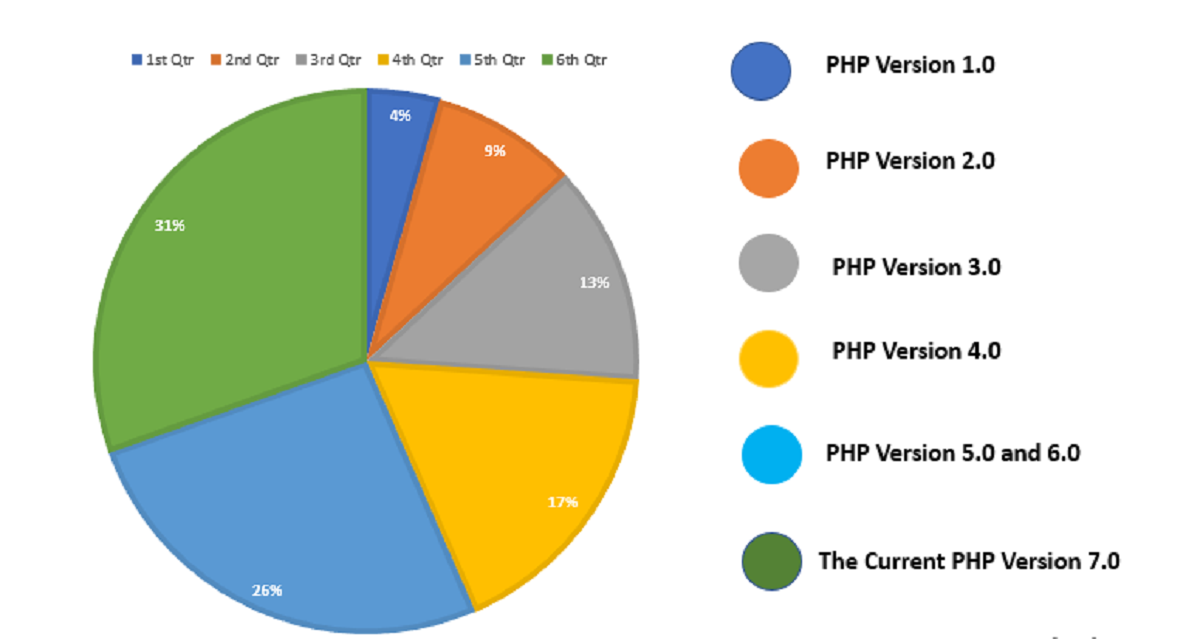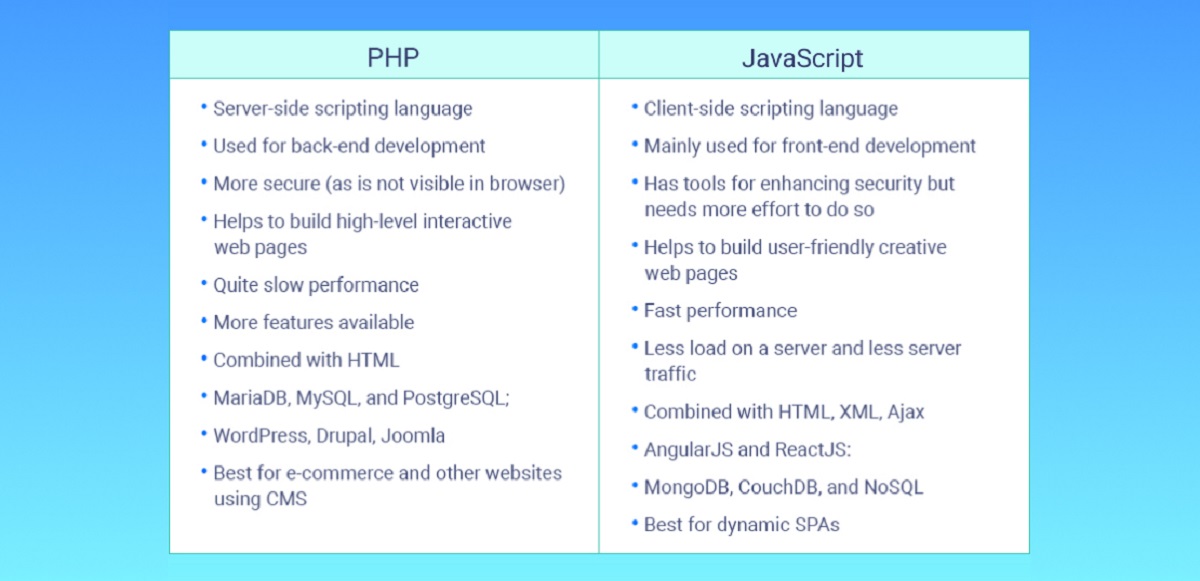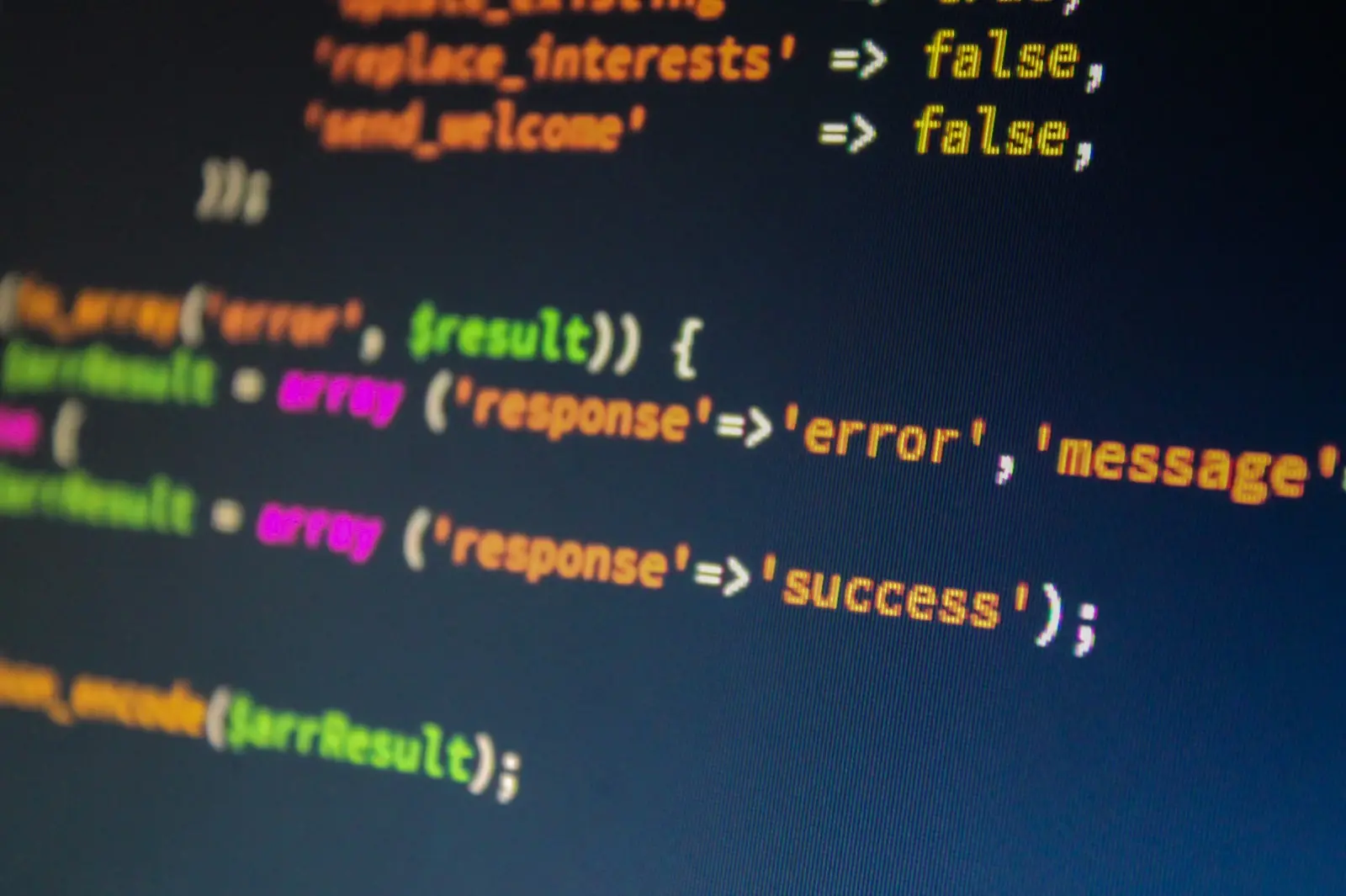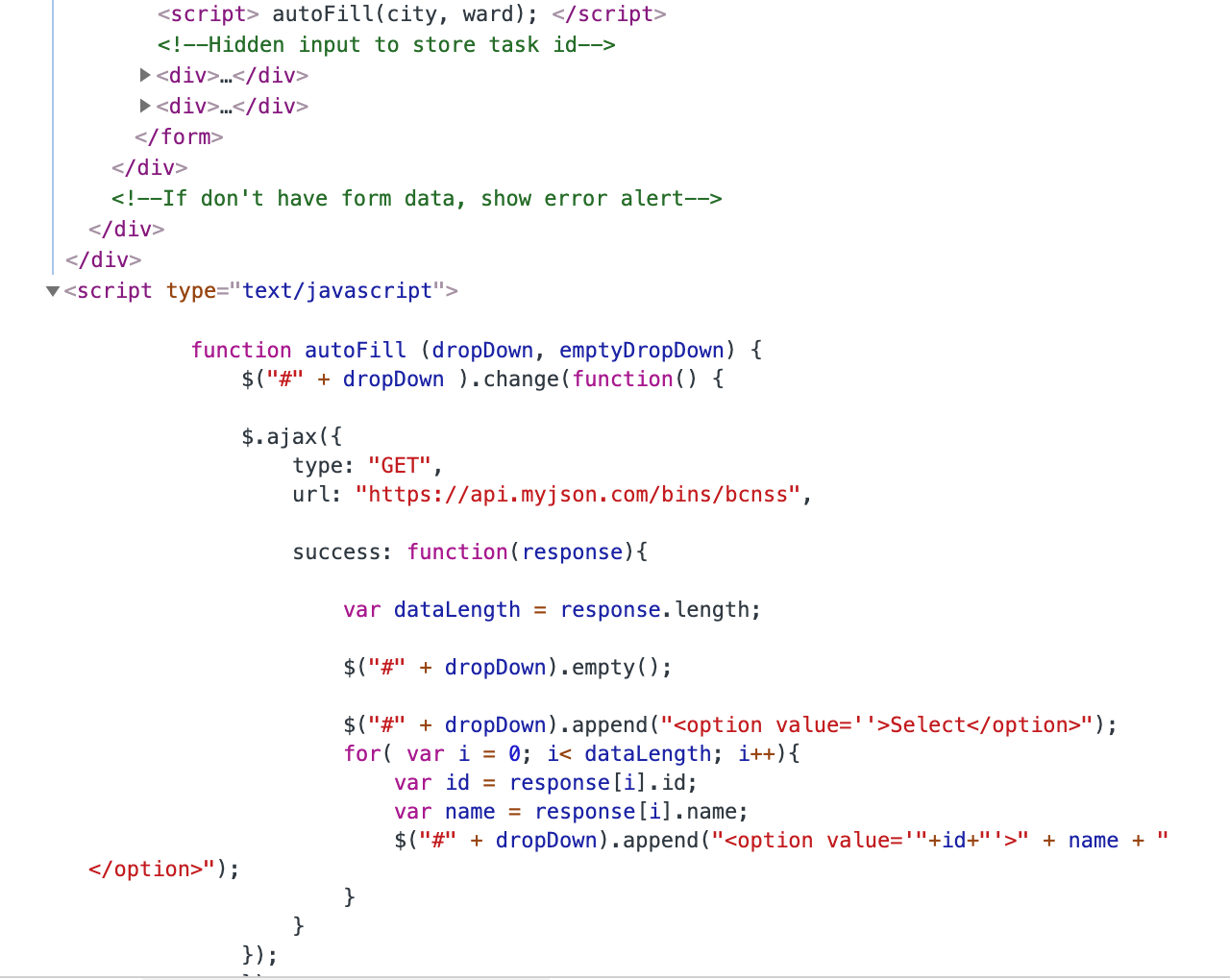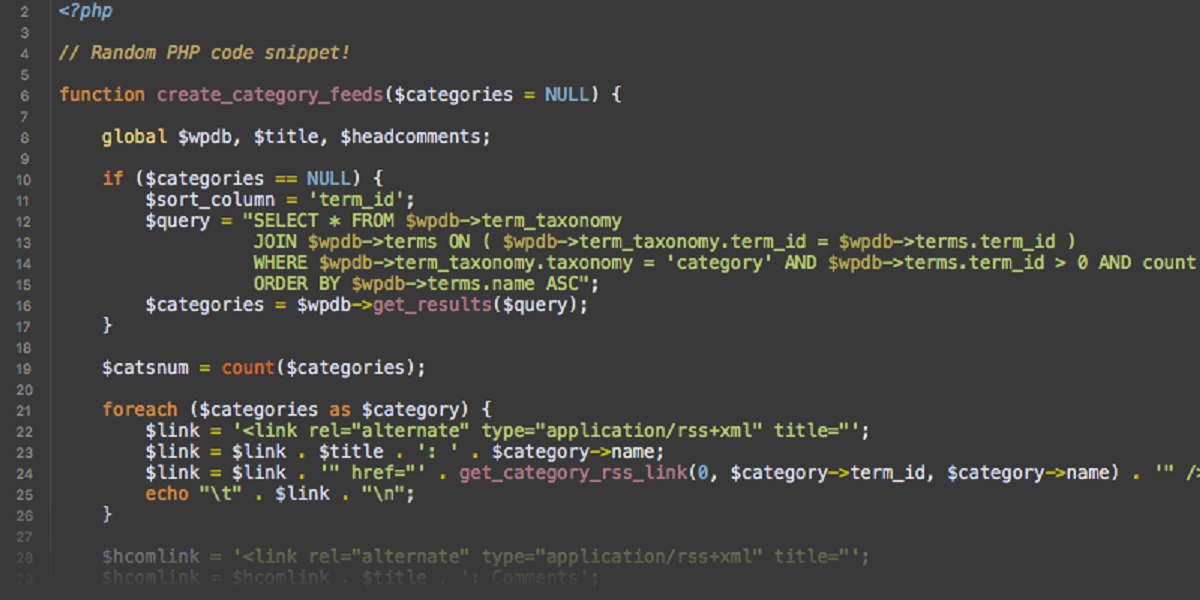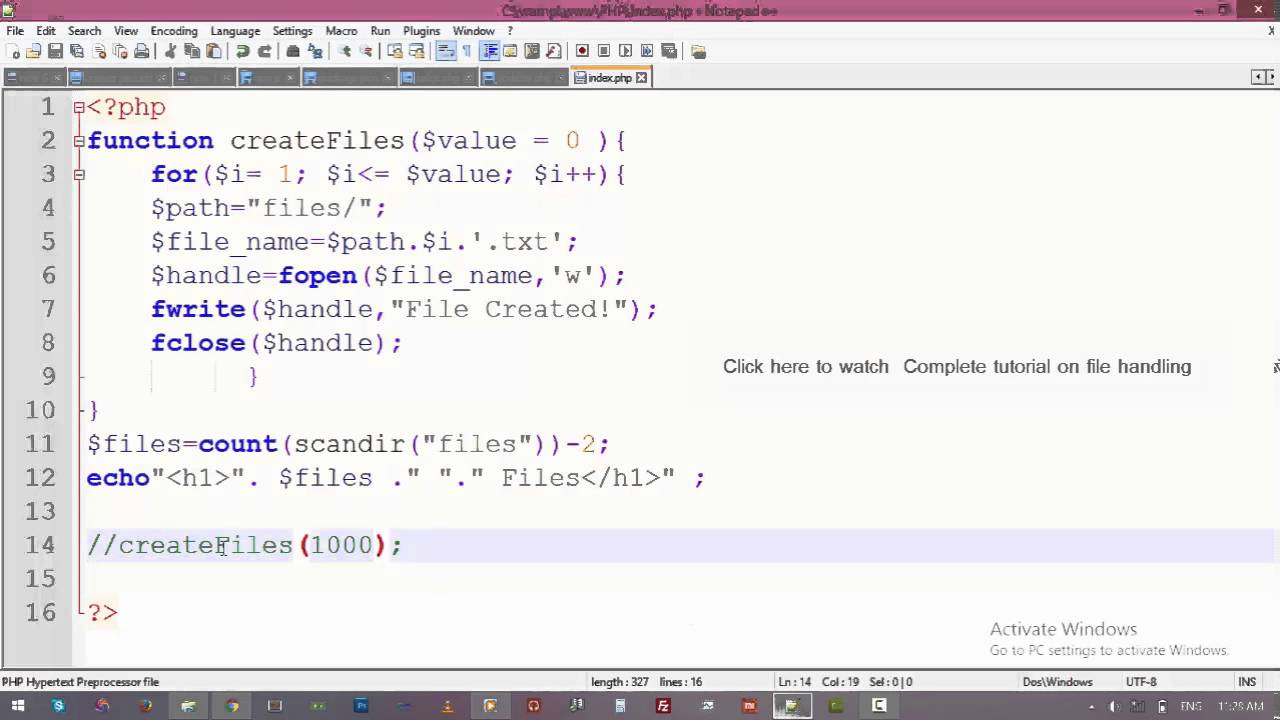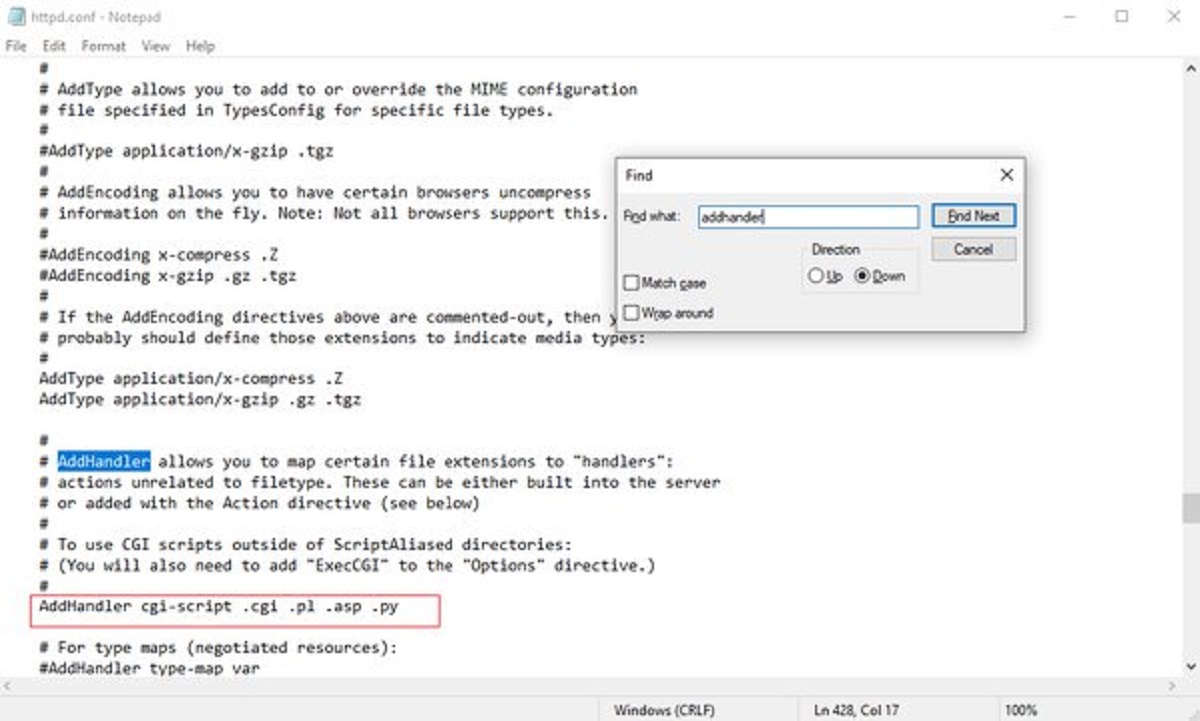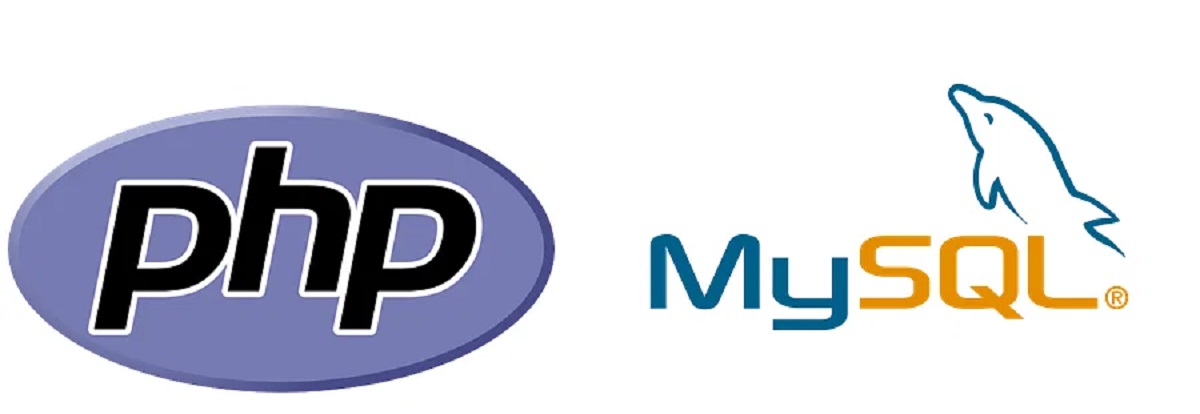Overview of PHP
PHP, which stands for Hypertext Preprocessor, is a widely used open-source server-side scripting language. It was first developed by Rasmus Lerdorf in 1994 and has since evolved into a powerful tool for creating dynamic web pages and web applications. PHP seamlessly integrates with HTML, allowing developers to embed PHP code directly within the HTML structure. Its versatility and simplicity make it a popular choice for both beginners and experienced developers.
One of PHP’s key strengths is its compatibility with various operating systems, including Windows, Linux, and macOS. Additionally, it can work with different web servers, such as Apache and Nginx. This cross-platform compatibility ensures that PHP applications can run on different environments without major modifications.
PHP is commonly used to add functionality to websites, such as processing user input, querying databases, and generating dynamic content. It offers a wide range of built-in functions and libraries for handling common web development tasks, such as handling form data, file manipulation, and database connections.
Furthermore, PHP boasts excellent support for multiple databases, making it an ideal choice for developing database-driven web applications. It provides seamless integration with popular database systems like MySQL, PostgreSQL, and Oracle. This allows developers to efficiently manage data and perform complex database operations.
Another notable feature of PHP is its extensive community support. The PHP community is vibrant and constantly contributes to the language’s growth. There are numerous online resources, forums, and communities where developers can seek advice, share knowledge, and collaborate on projects. This strong community support ensures that developers can easily find solutions to common problems and stay updated with the latest developments in PHP.
In summary, PHP is a versatile and user-friendly programming language that powers millions of websites and web applications across the globe. Its flexibility, compatibility, and extensive community support make it an excellent choice for developers seeking to create dynamic and interactive web experiences. Whether you are a beginner or an experienced developer, PHP offers a wealth of features and functionalities to streamline your web development process.
History of PHP
PHP, originally short for “Personal Home Page,” was created by Danish-Canadian programmer Rasmus Lerdorf in 1994. It started as a simple tool for managing his personal website, consisting of a few Perl scripts. Lerdorf gradually added more features, such as the ability to interact with databases and create dynamic web pages.
The language quickly gained popularity, and in 1997, Lerdorf released the source code for PHP as an open-source project. This move allowed the PHP community to grow rapidly, with developers worldwide contributing to the language’s development and improvement. The acronym PHP was subsequently redefined as “PHP: Hypertext Preprocessor,” reflecting its enhanced capabilities and purpose.
In 1998, PHP 3 was released, bringing significant improvements to the language, including support for object-oriented programming. This release marked a turning point for PHP, as it transformed from a simple scripting language to a more powerful and versatile tool for web development.
With the release of PHP 4 in 2000, the language became even more robust, introducing features like the Zend Engine, which improved performance and efficiency. This release solidified PHP’s position as one of the leading server-side scripting languages in the web development industry.
In 2004, PHP 5 was released, bringing substantial enhancements to the language. It introduced several new features, including improved support for object-oriented programming, exceptions handling, and a more advanced and efficient Zend Engine. PHP 5 further elevated PHP’s status as a mature and reliable language for developing complex web applications.
In recent years, PHP has continued to evolve. PHP 7, released in 2015, introduced significant performance improvements, making PHP applications much faster and more efficient. It also introduced new features, such as scalar type declarations and anonymous classes, further enhancing the language’s capabilities.
Today, PHP is one of the most widely used programming languages for web development, powering millions of websites and web applications. Its long history and active community have contributed to its continual growth and improvement. The latest version, PHP 8, features even more enhancements, including just-in-time compilation, union types, and attributes.
In summary, PHP has come a long way since its humble beginnings. From a personal project to a world-renowned programming language, PHP has proven its versatility, adaptability, and staying power. With a rich history and a vibrant community, PHP continues to evolve, providing developers with the tools they need to create dynamic and innovative web applications.
Features of PHP
PHP is a popular programming language known for its rich set of features that make it ideal for web development. Let’s explore some of the key features that contribute to PHP’s success:
- Easy to Learn and Use: PHP has a relatively gentle learning curve, making it accessible to beginners. Its syntax is similar to C and Java, allowing developers familiar with those languages to quickly adapt to PHP.
- Server-Side Scripting: PHP is primarily a server-side scripting language, meaning it runs on the server before the HTML is sent to the client’s browser. This enables dynamic content generation and enhanced functionality.
- Integration with HTML: PHP can be seamlessly embedded within HTML code, making it easy to mix PHP and HTML to create dynamic web pages. This allows developers to write PHP code directly within the HTML structure.
- Wide Platform Compatibility: PHP is compatible with various operating systems, including Windows, Linux, and macOS. It also works with different web servers, such as Apache and Nginx, ensuring cross-platform functionality.
- Database Support: PHP offers excellent support for interacting with databases, allowing developers to effortlessly connect and query databases like MySQL, PostgreSQL, and Oracle. This makes it a reliable choice for developing database-driven web applications.
- Extensive Library Support: PHP has a vast collection of built-in functions and libraries that simplify common web development tasks. These libraries cover a wide range of functionalities, such as file handling, form validation, image manipulation, and more.
- Object-Oriented Programming (OOP) Support: PHP supports object-oriented programming, allowing developers to organize code into reusable objects, improving code structure, readability, and maintainability.
- Frameworks and CMS: PHP has a vibrant ecosystem of frameworks and content management systems (CMS) like Laravel, Symfony, WordPress, and Drupal. These frameworks provide consistent structures, reusable components, and streamlined development processes.
- Community Support: PHP has a large and active community of developers who contribute to its growth and improvement. The PHP community provides resources, documentation, forums, and online communities where developers can share knowledge and seek assistance.
In summary, PHP offers a wide range of features that make it a versatile and powerful language for web development. Its ease of use, server-side scripting capabilities, seamless HTML integration, cross-platform compatibility, strong database support, extensive library collection, object-oriented programming support, and thriving community make PHP an ideal choice for building dynamic and interactive web applications.
PHP Syntax
The syntax of PHP follows a straightforward and intuitive structure, making it easy for developers to write and read PHP code. Let’s explore some key elements of PHP syntax:
- Opening and Closing Tags: PHP code is typically enclosed within tags. These tags indicate to the server that the code between them should be interpreted as PHP.
- Variables: PHP variables start with a $ sign, followed by the variable name. They are not case-sensitive, meaning $myVar and $myvar are considered the same variable. PHP variables store different types of data, such as integers, strings, arrays, and objects.
- Comments: PHP supports single-line comments using // and multi-line comments using /* */. Comments are useful for adding explanations or disabling code temporarily.
- Conditional Statements: PHP provides various conditional statements like if, else if, and else, allowing developers to execute specific code blocks based on different conditions. These statements help control the flow of the program.
- Loops: PHP offers loop structures like for, while, do-while, and foreach, enabling developers to iterate over data structures and repeat code blocks until certain conditions are met.
- Functions: PHP functions allow developers to encapsulate blocks of code inside reusable modules. Functions are defined using the function keyword, followed by the function name and a pair of parentheses. They can accept parameters and return values.
- Arrays: PHP arrays are used to store multiple values in a single variable. They can be indexed arrays, associative arrays, or multidimensional arrays.
- Strings: PHP supports string manipulation and interpolation. Strings can be enclosed in single quotes or double quotes. Variables and special characters can be inserted directly into double-quoted strings.
- Including Files: PHP allows the inclusion of external files using include and require statements. This is useful for modularizing code and reusing common functions or classes.
- Error Handling: PHP provides error handling mechanisms, such as try, catch, and throw statements, to gracefully handle and manage exceptions or errors that may occur during runtime.
By following the PHP syntax rules, developers can write clean and organized code that is easy to maintain and debug. Understanding these syntax elements is crucial for effectively utilizing PHP’s capabilities and building robust web applications.
Variables and Data Types in PHP
Variables in PHP are used to store and manipulate data. PHP supports various data types, making it versatile for handling different types of information. Let’s explore the concept of variables and the commonly used data types in PHP:
Variables: In PHP, variables are declared using the $ symbol followed by the variable name. They are case-sensitive, meaning $myVariable and $myvariable are considered different variables. Variables in PHP do not require explicit type declarations, as they are dynamically typed, allowing them to hold different types of values.
Data Types: PHP supports several data types, including:
- Integer: This data type represents whole numbers without decimal places. Examples include 0, -7, and 42.
- Float: Float, or floating-point numbers, represent numbers with decimal places. Examples include 3.14, -9.81, and 2.5.
- String: Strings are sequences of characters enclosed in either single quotes or double quotes. They are used to represent textual data. Examples include ‘Hello, world!’ and “PHP is awesome”.
- Boolean: The boolean data type represents two possible values: true or false. Booleans are often used in conditional statements and logical operations.
- Array: An array is a collection of values stored under a single variable. It can hold multiple values of different types. Arrays can be indexed numerically or associatively.
- Object: Objects are instances of classes in object-oriented programming. They encapsulate data properties and related behaviors into a single entity.
- NULL: NULL is a special data type that represents the absence of a value. It is often used to indicate that a variable has not been assigned a value yet.
Type Casting: PHP allows for type casting, which is the conversion of one data type to another. This can be done explicitly using casting functions, such as (int), (float), (string), (bool), etc.
Variable Scope: Variables in PHP have different scopes, determining their visibility and accessibility within different parts of the code. The main variable scopes are global, local, and static. Understanding variable scope is important to avoid conflicts and manage the lifecycle of variables.
By utilizing variables and understanding the various data types available in PHP, developers can store, manipulate, and process data effectively. Choosing the appropriate data type for variables ensures accurate data representation and facilitates efficient coding.
Control Structures in PHP
Control structures in PHP enable developers to control the flow of their programs, allowing for condition-based execution, looping, and decision-making. These structures play a vital role in manipulating data and controlling the behavior of PHP code. Let’s explore some commonly used control structures in PHP:
- If Statement: The if statement is used for conditional execution. It allows developers to execute a block of code if a certain condition evaluates to true. It can be combined with else if and else statements to handle multiple conditions.
- Switch Statement: The switch statement is used when there are multiple possible values for a variable. It allows developers to compare a variable against different cases and execute code based on matching cases. It is a concise alternative to a series of if-else statements.
- While Loop: The while loop repeatedly executes a block of code as long as a given condition is true. It is useful when the number of iterations is unknown, and the code needs to be executed until a specific condition is met.
- Do-While Loop: The do-while loop is similar to the while loop but guarantees the execution of the code block at least once, even if the condition is initially false. The condition is checked after executing the code block.
- For Loop: The for loop is used when the number of iterations is known. It consists of three parts: initialization, condition, and increment/decrement. It executes a block of code until the condition becomes false.
- Foreach Loop: The foreach loop is designed specifically for traversing arrays. It allows developers to iterate over each element of an array without needing to track or manage array indexes.
- Break Statement: The break statement is used to exit out of a loop prematurely. It is often used within conditions to terminate a loop when a specific condition is met.
- Continue Statement: The continue statement is used to skip the rest of the current iteration and move to the next iteration of a loop. It allows developers to bypass certain code within a loop based on specific conditions.
These control structures provide developers with the flexibility to control how their code is executed, enabling them to respond to different conditions and iterate over data structures. By mastering these control structures, developers can build powerful and dynamic PHP applications with precise logic and flow control.
Functions in PHP
Functions in PHP are a fundamental building block of modular and reusable code. They allow developers to encapsulate a block of code into a single entity, which can be invoked and reused throughout the program. Functions enhance code organization, readability, and maintainability. Let’s delve into the key aspects of functions in PHP:
Function Declaration: To create a function in PHP, the function keyword is used, followed by the function name and a pair of parentheses. Any required parameters are specified within the parentheses. The code block to be executed is enclosed within curly braces {}.
Function Parameters: Functions can accept zero or more parameters, which are placeholders for values passed to the function when it is invoked. Parameters can be typed or untyped, allowing developers to define the expected data types of the passed values.
Function Return: Functions can optionally return a value using the return statement. The return statement terminates the function and sends the computed value back to the point where the function was invoked. If no return statement is used, the function may be void and will not return any value.
Function Invocation: To execute a function, its name is used followed by a pair of parentheses. If the function has parameters, the required values are passed within the parentheses to provide the necessary input for the function execution.
Function Scope: Functions in PHP have their own scope, meaning variable names declared within a function are only accessible within that function unless explicitly passed as parameters or declared as global variables. This helps maintain data integrity and reduces naming conflicts.
Built-in Functions: PHP provides a rich library of built-in functions, offering a wide range of functionalities and capabilities. These functions cover various areas, including string manipulation, array operations, mathematical calculations, date and time operations, file handling, and much more.
User-defined Functions: In addition to built-in functions, PHP allows developers to create their own user-defined functions. This empowers developers to develop modular code by encapsulating repetitive or complex tasks into reusable functions, enhancing code organization and reducing redundancy.
Recursion: PHP supports recursive functions, which are functions that call themselves within their own code block. Recursive functions are useful for solving problems that can be divided into smaller, similar subproblems that are easier to solve.
Function Documentation: It is considered good practice to document the purpose, usage, and parameters of a function using PHPDoc comments. These comments help developers understand how to use the function correctly and provide meaningful documentation for future reference.
Functions play a crucial role in PHP development, promoting code reusability, readability, and maintainability. By leveraging functions, developers can optimize their programming workflow, enhance code organization, and create modular applications with ease.
File Handling in PHP
File handling is an essential aspect of many PHP applications, allowing developers to read from and write to files on the server. PHP provides a range of built-in functions and features for file handling operations. Let’s explore the key components of file handling in PHP:
File Opening: PHP offers functions like fopen() to open files in various modes such as read, write, append, or create a new file. Opening a file establishes a connection between the PHP script and the file, enabling subsequent operations.
File Reading: PHP provides functions like fgets(), fread(), and file() to read data from a file. These functions allow developers to read the file line by line, read a specific number of characters, or read the entire file content into an array.
File Writing: PHP facilitates writing data to a file using functions like fwrite() or file_put_contents(). These functions allow developers to write data to a specific file or create a new file if it doesn’t exist. Files can be written sequentially or using random access depending on the requirements.
File Closing: Once the file operations are complete, PHP provides the fclose() function to close the file. Closing the file is essential to release system resources and ensure data integrity.
File Manipulation: PHP includes functions for file manipulation tasks, such as renaming files, deleting files, or checking file existence. These functions, like rename(), unlink(), and file_exists(), provide convenient ways to manage files within PHP applications.
Working with Directories: PHP offers functions to work with directories, allowing developers to create new directories, get a list of files within a directory, or recursively traverse directories. Functions like mkdir(), scandir(), and glob() enable efficient directory operations.
File Permissions: PHP provides functions to set and retrieve file permissions, such as chmod() and fileperms(). These functions allow developers to control access levels to files and ensure adequate security measures.
Error Handling: During file operations, errors can occur, such as file not found, insufficient permissions, or disk full. PHP provides error handling mechanisms like file_exists() and file_get_contents() to handle potential errors and exceptions associated with file operations.
File Uploads: PHP has built-in features to handle file uploads through HTTP POST requests. The superglobal array $_FILES provides information about uploaded files, such as file name, size, and temporary storage location. Developers can then process, validate, and move uploaded files to desired destinations using appropriate functions and techniques.
File handling is a critical component of many PHP applications, enabling interaction with files and facilitating data persistence. By leveraging PHP’s file handling functions and features, developers can efficiently read, write, manipulate, and manage files, ensuring seamless file operations within their applications.
Object-Oriented Programming in PHP
Object-Oriented Programming (OOP) is a powerful paradigm that allows developers to organize code into reusable objects with data properties and related behaviors. PHP provides robust support for OOP, enabling developers to create modular, maintainable, and scalable applications. Let’s explore the key concepts of object-oriented programming in PHP:
Classes and Objects: In PHP, a class serves as a blueprint or template for creating objects. It defines the structure and behavior of an object. Objects are instances of classes, representing individual entities with their own set of properties and methods.
Encapsulation: Encapsulation is the principle of bundling data and related behavior together. In PHP, class properties and methods are encapsulated within a class, allowing controlled access to the data via getter and setter methods and ensuring data integrity.
Inheritance: Inheritance allows classes to derive properties and methods from a base or parent class. PHP supports single inheritance, meaning a class can inherit from only one parent class. Inherited properties and methods can be overridden or extended in the derived classes.
Polymorphism: Polymorphism refers to the ability of objects of different classes to respond to the same method call in different ways. In PHP, polymorphism is achieved through method overriding and interface implementation, allowing flexibility and code reusability.
Abstraction: Abstraction involves hiding the internal details of how an object functions and exposing only the necessary information and interfaces. PHP allows the creation of abstract classes and interfaces, serving as blueprints for concrete classes.
Interfaces: Interfaces define a contract that classes must adhere to. They specify a set of methods that implementing classes must define. PHP allows multiple interfaces to be implemented by a single class, facilitating code organization and flexibility.
Static Members: PHP supports static properties and methods, which are shared among all instances of a class rather than being specific to individual objects. Static members can be accessed directly without creating an instance of the class.
Namespaces: Namespaces are used to organize classes and prevent naming conflicts. They provide a way to group related classes together, enhancing code organization and modularity.
Object-oriented programming in PHP provides a structured and efficient approach to software development. It promotes code reusability, modularity, and maintainability. By leveraging the principles and features of OOP, developers can build robust and scalable PHP applications that are easier to understand, modify, and extend.
MySQL and PHP
PHP and MySQL form a powerful combination for building database-driven web applications. PHP provides seamless integration with MySQL, one of the most widely used open-source relational database management systems. Let’s explore how PHP and MySQL work together to handle databases in web applications:
Database Connection: PHP offers functions like mysqli_connect() and PDO to establish a connection between the PHP application and the MySQL database server. These functions require the necessary credentials, such as the server address, username, password, and database name.
Executing SQL Queries: Once the connection is established, PHP can execute SQL queries to interact with the database. Queries can be executed using functions like mysqli_query() or PDO prepare/execute methods. These functions allow developers to fetch data, perform updates, insert records, and manipulate the database structure.
Retrieving Data: PHP offers functions to fetch data from MySQL, such as mysqli_fetch_assoc(), mysqli_fetch_array(), and PDO fetch methods. These functions retrieve data returned by SELECT queries as associative arrays, numerical arrays, or objects, depending on the developer’s preference.
Managing Data: PHP allows developers to perform insert, update, and delete operations on the MySQL database. Functions like mysqli_affected_rows() and PDO rowCount() can be used to determine the number of affected rows after executing these operations.
Data Sanitization and Prepared Statements: PHP provides mechanisms to protect against SQL injection attacks. Functions like mysqli_real_escape_string() and PDO prepare statements enable developers to sanitize user inputs and prevent malicious code from being executed.
Handling Transactions: PHP supports transactions, allowing developers to perform multiple database operations as a single unit of work. Functions like mysqli_begin_transaction() and PDO beginTransaction() facilitate transaction handling, ensuring data consistency and integrity during complex operations.
Error Handling: PHP provides functions like mysqli_connect_errno(), mysqli_connect_error(), and PDO error handling methods to capture and handle any errors that occur during database operations. These functions help developers identify and resolve issues in a timely manner.
Database Optimization: PHP allows the execution of optimization techniques such as indexing, query optimization, and caching mechanisms to enhance the performance of MySQL database operations. These optimizations can significantly improve the speed and efficiency of database-driven web applications.
By integrating PHP with MySQL, developers can create dynamic and data-driven web applications. The flexibility and power of PHP combined with the robustness and scalability of MySQL enable efficient management and retrieval of data, ensuring seamless integration between the front-end and back-end of web applications.
Useful PHP Libraries and Frameworks
PHP offers a vast ecosystem of libraries and frameworks that provide ready-to-use components, tools, and structures to streamline the development process. These libraries and frameworks enhance productivity, code quality, and scalability. Let’s explore some of the widely used PHP libraries and frameworks:
Laravel: Laravel is a powerful and feature-rich PHP framework known for its elegant syntax, robustness, and comprehensive documentation. It provides a wide range of tools and features for building web applications, including routing, database abstraction, authentication, caching, and more.
Symfony: Symfony is a flexible and scalable framework that follows the principles of modularity and reusability. It provides a set of reusable components and libraries that allow developers to build complex web applications efficiently. Symfony offers features like routing, testing, security, form handling, and caching.
CodeIgniter: CodeIgniter is a lightweight PHP framework renowned for its simplicity and excellent performance. It offers a small footprint and straightforward usage, making it a popular choice for developing small to medium-sized applications.
Zend Framework: Zend Framework is a highly extensible and enterprise-grade PHP framework. It provides a collection of robust and secure components that can be used independently or combined to build complex applications. Zend Framework is known for its emphasis on code quality, scalability, and modern PHP practices.
Composer: Composer is a dependency management tool for PHP that simplifies the process of installing, updating, and managing libraries and packages. It allows developers to easily integrate third-party libraries into their projects, manage versioning, and handle dependencies effortlessly.
PHPUnit: PHPUnit is a unit testing framework for PHP. It provides a set of tools and assertions for writing and running tests, ensuring the quality and correctness of the code. PHPUnit enables developers to write test cases to verify individual units of code.
Guzzle: Guzzle is a popular PHP HTTP client library that simplifies sending HTTP requests and handling responses. It provides an easy-to-use interface for making HTTP requests, handling request/response headers, authentication, and more.
Twig: Twig is a flexible and secure templating engine for PHP. With Twig, developers can separate the presentation layer from the business logic, making the development process more maintainable and scalable. Twig provides a clean and intuitive syntax for templating.
Monolog: Monolog is a powerful logging library for PHP. It allows developers to capture and record log messages in various formats, such as files, databases, or external services. Monolog helps in debugging, error tracking, and monitoring application behaviors.
Doctrine: Doctrine is an object-relational mapping (ORM) library for PHP. It simplifies database interactions by mapping database tables to PHP objects. Doctrine provides a query builder, schema management, and caching mechanisms, making database manipulation straightforward and efficient.
These are just a few examples of the many libraries and frameworks available in the PHP ecosystem. Depending on the project requirements, developers can leverage these tools to improve productivity, code quality, and maintainability. The use of these libraries and frameworks can significantly accelerate PHP development, allowing developers to focus on delivering robust and feature-rich applications.
Best Practices in PHP Development
Following best practices is crucial for writing clean, efficient, and maintainable PHP code. Adhering to established conventions and adopting good coding practices not only improves code quality but also enhances collaboration and makes troubleshooting easier. Let’s explore some of the best practices in PHP development:
- Consistent Code Formatting: Adhere to a consistent code formatting style throughout your project. Consistency in indentations, line breaks, and whitespace helps improve code readability and maintainability.
- Meaningful Variable and Function Names: Use descriptive names for variables, functions, and methods to enhance code comprehension. Avoid cryptic abbreviations and prioritize clarity over brevity.
- Commenting and Documentation: Document your code and provide comments wherever necessary. Clearly explain the purpose, inputs, and outputs of functions and complex code blocks. This improves code maintainability and helps other developers understand your code.
- Error Handling: Implement proper error handling mechanisms using try-catch blocks to gracefully handle exceptions and errors. Log errors appropriately and provide meaningful error messages to aid in troubleshooting.
- Proper Use of PHP Tags: Use the standard tags for PHP code to ensure compatibility across different environments. Avoid short tags () as they may not be enabled by default on all servers.
- Sanitizing User Input: Always sanitize and validate user input to prevent security vulnerabilities like SQL injection or cross-site scripting (XSS) attacks. Utilize functions like mysqli_real_escape_string() or prepared statements to handle user input securely.
- Code Reusability: Encapsulate reusable code into functions or classes and promote code reusability across your project. Modularize your code to improve maintainability and reduce duplication.
- Version Control: Use a version control system like Git to track changes in your codebase. Version control allows you to collaborate with others, roll back changes, and easily manage code revisions.
- Testing: Implement testing methodologies like unit testing, integration testing, and functional testing to ensure code correctness and reliability. Tools like PHPUnit can help automate the testing process.
- Optimization: Optimize your PHP code for performance by eliminating redundant operations, minimizing database queries, and utilizing caching mechanisms effectively. Profile your code to identify bottlenecks and optimize accordingly.
Following these best practices promotes consistency, readability, and maintainability in PHP codebases. It enhances collaboration, reduces bugs, and improves overall development efficiency. By adopting these practices, you can build high-quality PHP applications that are easy to understand, extend, and maintain.
Common PHP Security Issues and How to Avoid Them
Ensuring the security of PHP applications is of paramount importance to protect data and prevent unauthorized access. Here are some common PHP security issues and best practices to avoid them:
- SQL Injection: Properly sanitize and validate user input to mitigate the risk of SQL injection attacks. Use prepared statements or parameterized queries to prevent malicious SQL commands from being executed.
- Cross-Site Scripting (XSS): Sanitize and encode user-supplied data before displaying it to prevent XSS attacks. Utilize functions like htmlspecialchars() when outputting data to escape special characters and prevent malicious code execution in web browsers.
- Cross-Site Request Forgery (CSRF): Implement CSRF protection by using tokens to validate requests. Generate unique tokens for each user session and include them in forms or AJAX requests. Verify the token on the server-side to ensure that requests are legitimate.
- File Upload Vulnerabilities: Validate and restrict file uploads to prevent potential security risks. Perform server-side validation to ensure the file type, size, and content meet the desired criteria. Consider saving uploaded files outside the web root directory.
- Authentication and Authorization: Implement secure authentication and authorization mechanisms to protect sensitive areas of your application. Use strong hashing algorithms like bcrypt or Argon2 for password storage. Always enforce strong passwords and avoid storing sensitive information in cookies or client-side storage.
- Insecure Direct Object References (IDOR): Avoid exposing internal identifiers or database keys directly in URLs or forms. Utilize indirect references or additional access controls to prevent unauthorized access to sensitive resources.
- Secure Session Management: Use secure session handling techniques. Regenerate session IDs on login and logout to prevent session fixation attacks. Store session data on the server-side or in a secure and encrypted manner.
- Input Validation: Validate and sanitize all user input to prevent both client-side and server-side vulnerabilities. Use appropriate input validation filters and escape characters where necessary to prevent unexpected behavior and security loopholes.
- Secure Configuration: Ensure proper file and directory permissions on the server. Restrict access to sensitive files and directories. Disable unnecessary PHP functions or features that could pose security risks.
- Regular Updates: Keep your PHP version, frameworks, libraries, and plugins up to date. Regularly apply security patches and fixes provided by PHP developers to address known vulnerabilities.
By adhering to these security practices, developers can mitigate potential risks and vulnerabilities in PHP applications. Implementing secure coding practices, employing input validation, safeguarding against common attacks, and staying updated with the latest security practices contribute to the overall security of PHP applications.







